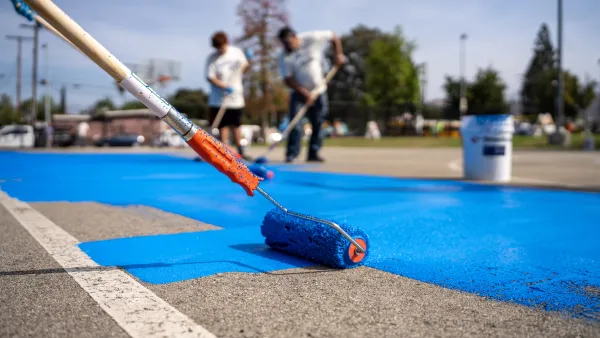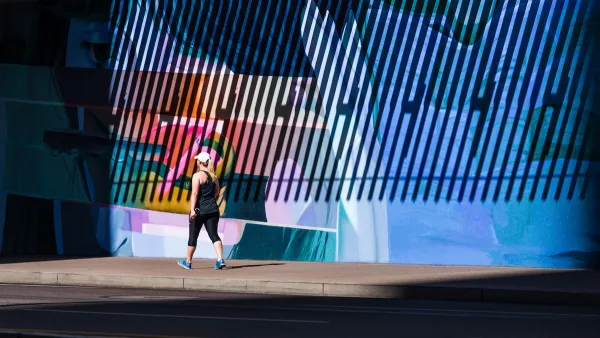With asphalt temperatures reaching as much as 150 degrees, parents and advocates are asking the city’s school district to provide more shade, trees, and other heat mitigation features on its schoolyards and playgrounds.

Parents and advocates are calling on the Los Angeles Unified School District to implement more heat mitigation measures on its school playgrounds, where asphalt can reach temperatures of 150 degrees Fahrenheit, reports Jasmine Viel for CBS Los Angeles.
“LAUSD is one of the largest landowners in the city, owning 6,400 acres of schoolyards. These schoolyards that are covered in asphalt are some of the hottest places in every single neighborhood,” says Aleigh Lewis of Angelenos for Green Schools. While the district has announced plans to add more trees and greenery to its schoolyards, some parents are calling for more immediate action. “The quickest option, if you can't wait for trees to grow, is to just put shade structures,” said LAUSD parent Connor Clayton.
The Los Angeles Times brought attention to the issue in March, when Tony Barboza detailed the negative impacts of overheated asphalt schoolyards. Barboza noted that LAUSD’s superintendent, Alberto Carvalho, “promised to release a plan within his first 100 days to green schoolyards, starting with asphalt-dominated campuses in neighborhoods with the greatest need for open space.”
In June, the district announced a new budget that includes funding for ‘greening schoolyards’ as well as a pilot program at Castellanos Elementary, reported Erin Stone in LAist. According to Stone’s article, “A recent study by the Trust for Public Land found that when factoring in benefits gained by greening schools, such as increased student attendance, better test scores, higher teacher retention and lower utility costs as a result of a cooler campus, California schools could save $600,000 over 20 years per campus.”
FULL STORY: LAUSD parents call for changes to school playgrounds amid scorching temperatures

National Parks Layoffs Will Cause Communities to Lose Billions
Thousands of essential park workers were laid off this week, just before the busy spring break season.

Retro-silient?: America’s First “Eco-burb,” The Woodlands Turns 50
A master-planned community north of Houston offers lessons on green infrastructure and resilient design, but falls short of its founder’s lofty affordability and walkability goals.

Delivering for America Plan Will Downgrade Mail Service in at Least 49.5 Percent of Zip Codes
Republican and Democrat lawmakers criticize the plan for its disproportionate negative impact on rural communities.

Test News Post 1
This is a summary

Test News Headline 46
Test for the image on the front page.

Balancing Bombs and Butterflies: How the National Guard Protects a Rare Species
The National Guard at Fort Indiantown Gap uses GIS technology and land management strategies to balance military training with conservation efforts, ensuring the survival of the rare eastern regal fritillary butterfly.
Urban Design for Planners 1: Software Tools
This six-course series explores essential urban design concepts using open source software and equips planners with the tools they need to participate fully in the urban design process.
Planning for Universal Design
Learn the tools for implementing Universal Design in planning regulations.
EMC Planning Group, Inc.
Planetizen
Planetizen
Mpact (formerly Rail~Volution)
Great Falls Development Authority, Inc.
HUDs Office of Policy Development and Research
NYU Wagner Graduate School of Public Service





























